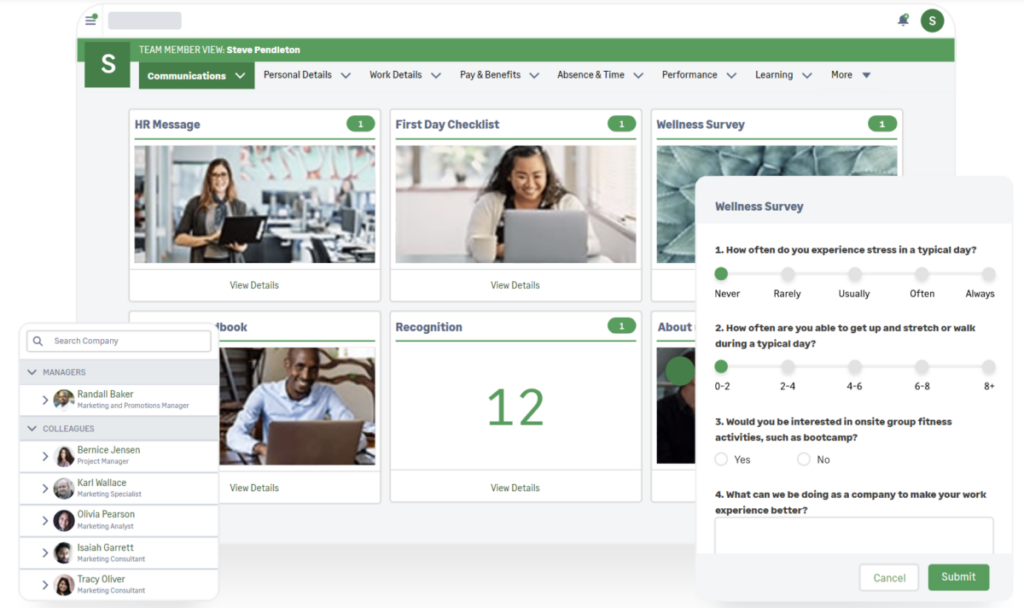
What is compensation management?
Compensation management – the process of managing people’s salaries and benefits – has been the bread and butter of HR teams for decades.
Historically, these processes have been managed via spreadsheets or legacy software. Yet, in recent years, there’s been a rise in startups and services dedicated specifically to this business-critical task. From early pioneers in this space such as Salary.com, Payscale and Performio, to more recent entries by HiBob, Figures and Ravio.
By 2030, the market is expected to grow annually by 8.1% and exceed $1.1 billion in value. Little wonder, then, that the incumbents are getting in on the action. Workday now offers Workday Compensation; Sage has Sage People; there’s Salesforce Compensation, Oracle Cloud HCM and many more.

Compensation management vs payroll
Compensation management involves creating and managing compensation packages for employees and job candidates.
The task is often confused with payroll, but it goes much further than processing salary payments. Compensation management packages help a company determine salary bands for different role types, identify base salaries, bonuses, stock options and other benefits. All within the wider remuneration strategy.
Compensation management isn’t a new process, but until recently such packages would have been managed manually. Only being updated once a year, or every six months, and not being dynamic enough to respond to market and economic changes. Many companies would also keep such packages confidential, either deliberately or because there wasn’t an effective way to share them.
What are compensation management tools?
Compensation management tools promote transparency, equitability and productivity by streamlining the process of creating and managing compensation packages for employees. They use AI, automation, and real-time data to help companies track and respond to market changes, and stay competitive.
Depending on the tool, companies can input budget data and requirements and track their packages with both short-term and long-term goals. They can dynamically experiment with different salary bands and bonus structures to see which bring the most value to both employees and the business.
These tools are also designed to be intuitive and user-friendly – HiBob was once described as being like “Instagram on the front end, Workday on the back” – and accessible for staff as well as management and HR teams. All while offering full, end-to-end pay transparency.
How does compensation management help employees?
Compensation management tools help bring about pay transparency and foster an environment of trust, fairness and openness. Historically, it would have been rare for employees to see beyond their own pay details. This meant they had no idea how their pay compared to that of their colleagues, or peers elsewhere in the industry.
By being more transparent, companies can increase employee satisfaction and engagement, because staff know they’re being paid what they’re worth. They can also reduce the likelihood of pay discrimination and give staff the confidence to discuss pay rises and other forms of remuneration like never before.
Elsewhere, compensation management tools can help reduce financial stress. In the UK alone, one in five employees say financial stress impacts their productivity. And those experiencing financial stress are twice as likely to experience suicidal thoughts. By having a clear understanding of the total compensation package – their base salary but also any bonuses, stock options, or other benefits they’re – they can make informed decisions about their financial futures, which can help to reduce anxiety and stress.
How does compensation management benefit businesses?
Increased transparency doesn’t just benefit employees, though. It allows companies to identify and address any systemic biases that may be impacting their pay structures, making them more diverse and inclusive.
This isn’t simply a tickbox exercise: it makes them more attractive to job seekers. Compensation is consistently named as a key reason why people take roles or seek alternative employment. As such, compensation built on robust data gives companies a distinct competitive advantage. It allows them to attract and retain the very best talent.
Compensation management tools also help improve the overall efficiency of the HR department. By automating and streamlining the compensation management process, HR teams can save time while making sure employees are compensated fairly. This increased efficiency can also help to reduce errors and improve the accuracy of payroll data.
Plus, they help businesses respond to market changes and manage the current cost of living crisis. The tools give companies up-to-date information about industry pay standards. This can be used to create competitive compensation packages that attract talent without pushing the company’s budget.
Why is compensation management seeing such a surge?
The surge in compensation management tools is being driven by two key factors. First, there’s the budget squeeze. Companies are asking HR departments to do more for less. In tandem with the advance of AI and automation, HR teams will naturally invest in tools that help them. A recent Gartner report found that, for the second year running, investing in technology is the top priority for HR leaders globally.
Second, there is a laser focus on making companies more accountable and equitable. Not just in terms of the gender pay gap, but in offering fair and liveable wages in the wake of inflation. The EU is leading the way with its Pay Transparency Directive, which promotes pay transparency. In particular, companies with more than 250 employees must publish data on the gender pay gap within their organisation.
In short, compensation management tools are shifting from a nice-to-have to a regulatory must. Investing in the technology isn’t just a decision that could transform the culture, growth and bottom line of your business, it’s one that will help drive fairer, more equitable, and transparent businesses generally. A win-win.
Read next: Confessions of an IT Manager: why I say “no” when you ask me for something new
NEXT UP

Slow buyers cause tech firms to rethink sales approaches as tough Q1 hits home
New research suggests tech sales were slow in Q1, with buyers of technology and professional services taking their time before committing to any solutions.

ByteDance says it has no plans to sell TikTok and refuses to bow to US pressure
ByteDance, the Chinese company that owns TikTok, stated that it “doesn’t have any plans to sell TikTok” on Toutiao, a social media platform that it also happens to own.

Solace Kidisil, Group COO of Nsano: “The difference between traditional finance and fintech is the questions we ask”
We interview Solace Kidisil, Group COO of Nsano, a fintech company from Ghana, offering digital payment solutions across Africa